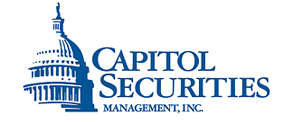By: Kent Engelke | Capitol Securities
Markets were mixed Friday heading into this week’s FOMC meeting. White House turmoil was looked past and attention was focused on better than expected factory output and consumer sentiment.
Commenting about sentiment, confidence is now at the highest level since January 2004 with the sharpest gains coming from the lower third of the economy. Inflationary expectations are at a 3-year high of 2.9% versus the expected rate of 2.5%.
Inflation is a two part phenomenon. The first part is too much money chasing too few goods fearing higher prices tomorrow.
If inflationary expectations become unanchored, Treasury yields will rise, for such are already 1.25% to 1.5% lower based upon the historical relationship between the 10-year Treasury and real GDP. In other words, there is great confidence in the inflation fighting prowess of the Federal Reserve.
As noted above and speaking of the Fed, the two day meeting commences tomorrow. A 0.25% increase is expected. Will the Committee suggest the possibility of three more increases in 2018 for a total of four? As little as six weeks ago, the markets had not yet discounted two.
For what it is worth department, Larry Kudlow who is now head of the National Council of Economic Advisors, privately told the White House the economy is on the edge of 4% to 5% growth as the economy is on the “front edge of the biggest investment bomb in perhaps 30-40 years.”
Some may immediately dismiss this outlook as politically motivated, however, it is consistent with the outlook of JP Morgan and several Federal Reserve presidents as well as former FRB Chair Greenspan. The reason for this anticipated growth by all groups… tax and banking reform including the immediate expensing of capital goods spending, as well as the acceleration of monetary velocity.
Changing topics, many times I have commented about market imbalances. Friday’s WSJ perhaps partially quantified these imbalances via the flow of funds. According to the WSJ, almost $5 billion has poured into tech focused funds this year. This figure represents half of what this group pulled in, in all of 2017. During January, the tech sector pulled in a record $3.7 billion, the greatest inflow for this sector (and any other sector) since March 2000.
The Journal reiterated that less than six companies are responsible for any 2018 S & P 500 gains. Without these gains this marquee index would be down almost into “corrective territory.” Wow!
Continuing with this theme, according to the Commerce Department, Internet sales account for about 10% total retail sales. These sales include purchases made from Walmart and any other companies that have an online presence.
One of the companies that has contributed to a large proportion of the S & P 500 advance is an online retailer. Amazon’s total sales are about 25% of that of Walmart, but Amazon is worth about three times more than Walmart. Walmart makes in a year what Amazon has made since it went public in 1997.
I ask is this sustainable? Perhaps the appropriate question is this rational given that companies are valued by corporate cashflow discounted by some interest rates? The growth rate is a minority factor in valuation formulas.
Speaking of growth, the Commerce Department states online sales grew by 9% in 2017. Overall, retail sales were up about 4.1%.
Some have stated indexing and technology based trading has created a more efficient and liquid market. I will argue it has created an imbalanced market that could be teetering like a pile of sand. What grain will cause the sand pile to topple?
Perhaps this week’s Fed meeting could be that grain of sand; the grain of sand that is really better than expected growth that generated demand pull and cost push inflation.
Last night the foreign markets were down. London was down 1.29%, Paris was down 0.74% and Frankfurt was down 0.91%. China was up 0.29%, Japan was down 0.90% and Hang Sang was up 0.04%.
The Dow should open moderately lower on a myriad of fears including monetary policy, trade and political tensions, potential large privacy violations from social media companies and technical trading patterns. The 10-year is off 6/32 to yield 2.87%.
















